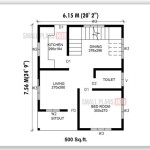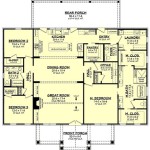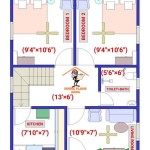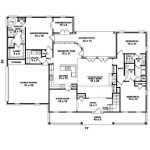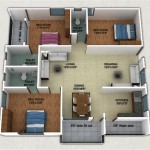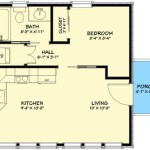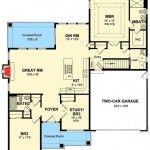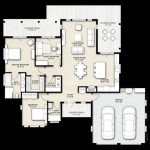How to Find Floor Plans of Buildings
Floor plans are essential tools for understanding building layouts, planning renovations, or simply exploring a space virtually. They provide a visual representation of the arrangement of rooms, walls, doors, windows, and other features within a building. Whether you're a homeowner, architect, or simply curious about a particular building, finding reliable floor plans can be a helpful endeavor. This article explores various methods for locating floor plans, covering both online and offline resources.
Online Resources for Floor Plans
The internet offers a wealth of resources for finding floor plans. Several online databases, websites, and platforms specialize in providing architectural drawings, including floor plans. Here are some of the most notable options:
1. Publicly Available Databases
Government agencies and public institutions often maintain databases of building plans, including floor plans. These databases may be accessible to the public, providing valuable insights into the layouts of both historical and contemporary structures. Some examples include:
- Municipal Building Departments: Many local governments maintain records of building permits and plans, which can include floor plans. These records may be accessible online or through a request to the building department.
- Historical Societies and Archives: Organizations dedicated to preserving local history often possess blueprints and floor plans of historical buildings within their communities. These archives can be valuable sources for researching the architectural development of a region.
- Digital Mapping Platforms: Online mapping services like Google Maps and OpenStreetMap may incorporate floor plans for certain buildings, particularly those that are open to the public, such as libraries, museums, and universities.
2. Specialized Floor Plan Websites
Numerous websites focus specifically on providing floor plans for various purposes. These platforms may offer a range of features, such as searchable databases, interactive floor plan viewers, and downloads of plan files. Some examples include:
- Architectural and Design Portals: Websites dedicated to architecture and design often feature floor plans of notable projects, showcasing examples of contemporary and historical buildings.
- Real Estate Listing Sites: Online platforms for property listings frequently include floor plans as part of their property descriptions. These floor plans can be helpful for visualizing the layout of homes or commercial properties.
- Floor Plan Databases: Dedicated websites and platforms provide access to extensive collections of floor plans, often organized by building type, location, or historical period.
3. Online Search Engines
General-purpose search engines like Google can be effective for finding floor plans by using specific search terms. For example, you can search for "floor plan [building name]" or "floor plan [address]." You can also refine your search by including keywords like "architectural plans," "blueprints," or "building drawings." When searching online, it's essential to evaluate the sources carefully, ensuring they are reliable and reputable.
Offline Resources for Floor Plans
While online resources offer convenience and accessibility, traditional offline methods can also be valuable for obtaining floor plans. These methods often involve physical visits and inquiries, but they can lead to unique and hard-to-find information.
1. Local Libraries and Archives
Libraries and archives frequently hold collections of historical documents, including architectural drawings and floor plans. These resources can be particularly helpful for researching the history and development of buildings in a specific area. Librarians and archivists can provide guidance on accessing these collections and identifying relevant materials.
2. Real Estate Agencies and Developers
Real estate agencies and property developers often possess floor plans for properties they represent. If you're interested in a particular building or development, contacting these organizations directly may provide access to their floor plans. They may have marketing materials or internal documentation that includes floor plan layouts.
3. Building Owners and Management Companies
For non-residential buildings, like commercial or industrial structures, contacting the building's owner or management company can be a direct way to obtain floor plans. These organizations typically have access to the building's blueprints and may be willing to provide copies or referrals to architectural firms that have worked on the building.
Tips for Finding Floor Plans
Finding floor plans can require persistence and a strategic approach. Here are some additional tips to help you effectively locate the information you need:
- Be Specific: When searching online or offline, provide as much detail as possible, including the building's name, address, year of construction, and any other relevant information.
- Contact Experts: If you're having difficulty finding floor plans, consider contacting architects, surveyors, or historical societies for assistance. These professionals may have access to specialized resources or networks.
- Check for Copyright: Be aware that floor plans are often copyrighted, and obtaining permission to use them may be necessary for certain purposes.

9 Ways To Find Floor Plans Of An Existing House Blueprints Archid

How To Find Building Plans For My House Architecture Design Plan

9 Ways To Find Floor Plans Of An Existing House Blueprints Archid

Where You Can Buy House Plans Live Home 3d

How To Get Blueprints Of Your House

How To Find Blueprint Floor Plan Home Free House And Apartment

Floor Plans Learn How To Design And Plan

How To Read A Floor Plan With Dimensions Houseplans Blog Com

How To Find Floor Plans Blue Prints Of Your House

12 Examples Of Floor Plans With Dimensions

